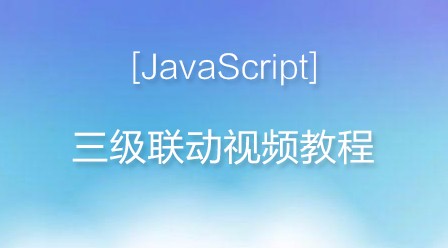
1、思路
首先在onMeasure方法中测量ViewGroup的宽和高,重点是处理当我们自定义的ViewGroup设置为wrap_content的情况下,如何去测量其大小的问题。当我们自定义的ViewGroup设置为wrap_content时,我们需要让子View先去测量自己,当子View测量完后,再通过子View的getMeasuredWidth和getMeasureHeight方法获得其子View的宽和高。每次在测量一个子View之前,都需要判断如果加入该子View,当前行是否能够容纳下该子View,如果不能,则需要新开一行,并记录下当前行的最大高度。
在onLayout方法中,核心人物是给每个子View摆放位置,也就是为该ViewGroup中每个子View找到盒子模型上面的两个点也就是左上角和右下角,即点(l,t)和点(r,b),确定了两个点,子View的位置也就确定了。
2、实现
基本思路有了就可以尝试实现了,代码如下:
自定义的ViewGroup:
/**
* 流式标签(动态的,根据传入的数据动态添加标签)
*/
public class DynamicTagFlowLayout extends ViewGroup {
private List<String> mTags = new ArrayList<String>();
public DynamicTagFlowLayout(Context context, AttributeSet attrs, int defStyle) {
super(context, attrs, defStyle);
}
public DynamicTagFlowLayout(Context context, AttributeSet attrs) {
super(context, attrs);
}
public DynamicTagFlowLayout(Context context) {
super(context);
}
@Override
protected void onMeasure(int widthMeasureSpec, int heightMeasureSpec) {
int widthMode = MeasureSpec.getMode(widthMeasureSpec);
int widthSize = MeasureSpec.getSize(widthMeasureSpec);
int heightMode = MeasureSpec.getMode(heightMeasureSpec);
int heightSize = MeasureSpec.getSize(heightMeasureSpec);
//当前ViewGroup的总高度
int totalHeight= 0;
//所有行中的最大宽度
int maxLineWidth = 0;
//当前行的最大高度
int lineMaxHeight = 0;
//当前行的总宽度
int currentLineWidth = 0;
//每个childView所占用的宽度
int childViewWidthSpace = 0;
//每个childView所占用的高度
int childViewHeightSpace = 0;
int count = getChildCount();
MarginLayoutParams layoutParams;
for(int i = 0; i < count; i++){
View child = getChildAt(i);
if(child.getVisibility() != View.GONE){//只有当这个View能够显示的时候才去测量
//测量每个子View,以获取子View的宽和高
measureChild(child, widthMeasureSpec, heightMeasureSpec);
layoutParams = (MarginLayoutParams) child.getLayoutParams();
childViewWidthSpace = child.getMeasuredWidth() + layoutParams.leftMargin + layoutParams.rightMargin;
childViewHeightSpace = child.getMeasuredHeight() + layoutParams.topMargin + layoutParams.bottomMargin;
if(currentLineWidth + childViewWidthSpace > widthSize){//表示如果当前行再加上现在这个子View,就会超出总的规定宽度,需要另起一行
totalHeight += lineMaxHeight;
if(maxLineWidth < currentLineWidth){//如果行的最长宽度发生了变化,更新保存的最长宽度
maxLineWidth = currentLineWidth;
}
currentLineWidth = childViewWidthSpace;//另起一行后,需要重置当前行宽
lineMaxHeight = childViewHeightSpace;
}else{//表示当前行可以继续添加子元素
currentLineWidth += childViewWidthSpace;
if(lineMaxHeight < childViewHeightSpace){
lineMaxHeight = childViewHeightSpace;
}
}
}
}
setMeasuredDimension(widthMode == MeasureSpec.EXACTLY ? widthSize : maxLineWidth, heightMode == MeasureSpec.EXACTLY ? heightSize : totalHeight);
}
@Override
protected void onLayout(boolean changed, int l, int t, int r, int b) {
//当前是第几行
int currentLine = 1;
//存放每一行的最大高度
List<Integer> lineMaxHeightList = new ArrayList<Integer>();
//每个childView所占用的宽度
int childViewWidthSpace = 0;
//每个childView所占用的高度
int childViewHeightSpace = 0;
//当前行的最大高度
int lineMaxHeight = 0;
//当前行的总宽度
int currentLineWidth = 0;
int count = getChildCount();
MarginLayoutParams layoutParams;
for(int i = 0; i < count; i++){
int cl= 0, ct = 0, cr = 0, cb = 0;
View child = getChildAt(i);
if(child.getVisibility() != View.GONE){//只有当这个View能够显示的时候才去测量
layoutParams = (MarginLayoutParams) child.getLayoutParams();
childViewWidthSpace = child.getMeasuredWidth() + layoutParams.leftMargin + layoutParams.rightMargin;
childViewHeightSpace = child.getMeasuredHeight() + layoutParams.topMargin + layoutParams.bottomMargin;
System.out.println("getWidth()---->"+getWidth());
if(currentLineWidth + childViewWidthSpace > getWidth()){//表示如果当前行再加上现在这个子View,就会超出总的规定宽度,需要另起一行
lineMaxHeightList.add(lineMaxHeight);//此时先将这一行的最大高度加入到集合中
//新的一行,重置一些参数
currentLine++;
currentLineWidth = childViewWidthSpace;
lineMaxHeight = childViewHeightSpace;
cl = layoutParams.leftMargin;
if(currentLine > 1){
for(int j = 0; j < currentLine - 1; j++){
ct += lineMaxHeightList.get(j);
}
ct += layoutParams.topMargin ;
}else{
ct = layoutParams.topMargin;
}
}else{//表示当前行可以继续添加子元素
cl = currentLineWidth + layoutParams.leftMargin;
if(currentLine > 1){
for(int j = 0; j < currentLine - 1; j++){
ct += lineMaxHeightList.get(j);
}
ct += layoutParams.topMargin;
}else{
ct = layoutParams.topMargin;
}
currentLineWidth += childViewWidthSpace;
if(lineMaxHeight < childViewHeightSpace){
lineMaxHeight = childViewHeightSpace;
}
}
cr = cl + child.getMeasuredWidth();
cb = ct + child.getMeasuredHeight();
child.layout(cl, ct, cr, cb);
}
}
}
@Override
public LayoutParams generateLayoutParams(AttributeSet attrs) {
return new MarginLayoutParams(getContext(), attrs);
}
public void setTags(List<String> tags){
if(tags!= null){
mTags.clear();
mTags.addAll(tags);
for(int i = 0; i < mTags.size(); i++){
TextView tv = new TextView(getContext());
MarginLayoutParams lp = new MarginLayoutParams(MarginLayoutParams.WRAP_CONTENT, MarginLayoutParams.WRAP_CONTENT);
lp.setMargins(15, 15, 15, 15);
// lp.width = MarginLayoutParams.WRAP_CONTENT;
// lp.height = MarginLayoutParams.WRAP_CONTENT;
tv.setLayoutParams(lp);
tv.setBackgroundResource(R.drawable.tv_bg);
/*
* setPadding一定要在setBackgroundResource后面使用才有效!!!
* http://stackoverflow.com/questions/18327498/setting-padding-for-textview-not-working
*/
tv.setPadding(15, 15, 15, 15);
tv.setTextColor(Color.WHITE);
tv.setText(mTags.get(i));
tv.setOnClickListener(new OnClickListener() {
@Override
public void onClick(View v) {
if(listener != null){
listener.onClick(v);
}
}
});
addView(tv);
}
requestLayout();
}
}
private OnTagItemClickListener listener;
public interface OnTagItemClickListener{
public void onClick(View v);
}
public void setOnTagItemClickListener(OnTagItemClickListener l){
listener = l;
}
}MainActivity:
public class MainActivity extends Activity {
private DynamicTagFlowLayout dynamicTagFlowLayout;
List<String> tags = new ArrayList<String>();
@Override
protected void onCreate(Bundle savedInstanceState) {
super.onCreate(savedInstanceState);
setContentView(R.layout.activity_dynamic_tagflowlayout);
dynamicTagFlowLayout = (DynamicTagFlowLayout) findViewById(R.id.dynamic_tag);
dynamicTagFlowLayout.setOnTagItemClickListener(new OnTagItemClickListener() {
@Override
public void onClick(View v) {
TextView tv = (TextView) v;
Toast.makeText(MainActivity.this, tv.getText().toString(), Toast.LENGTH_SHORT).show();
}
});
initData();
dynamicTagFlowLayout.setTags(tags);
}
private void initData() {
tags.add("阳哥你好!");
tags.add("Android开发");
tags.add("新闻热点");
tags.add("热水进宿舍啦!");
tags.add("I love you");
tags.add("成都妹子");
tags.add("新余妹子");
tags.add("仙女湖");
tags.add("创新工厂");
tags.add("孵化园");
tags.add("神州100发射");
tags.add("有毒疫苗");
tags.add("顶你阳哥阳哥");
tags.add("Hello World");
tags.add("闲逛的蚂蚁");
tags.add("闲逛的蚂蚁");
tags.add("闲逛的蚂蚁");
tags.add("闲逛的蚂蚁");
tags.add("闲逛的蚂蚁");
tags.add("闲逛的蚂蚁");
}
}以上就是本文的全部内容,希望对大家的学习有所帮助,也希望大家多多支持PHP中文网。
更多Android自定义ViewGroup实现标签浮动效果相关文章请关注PHP中文网!



















